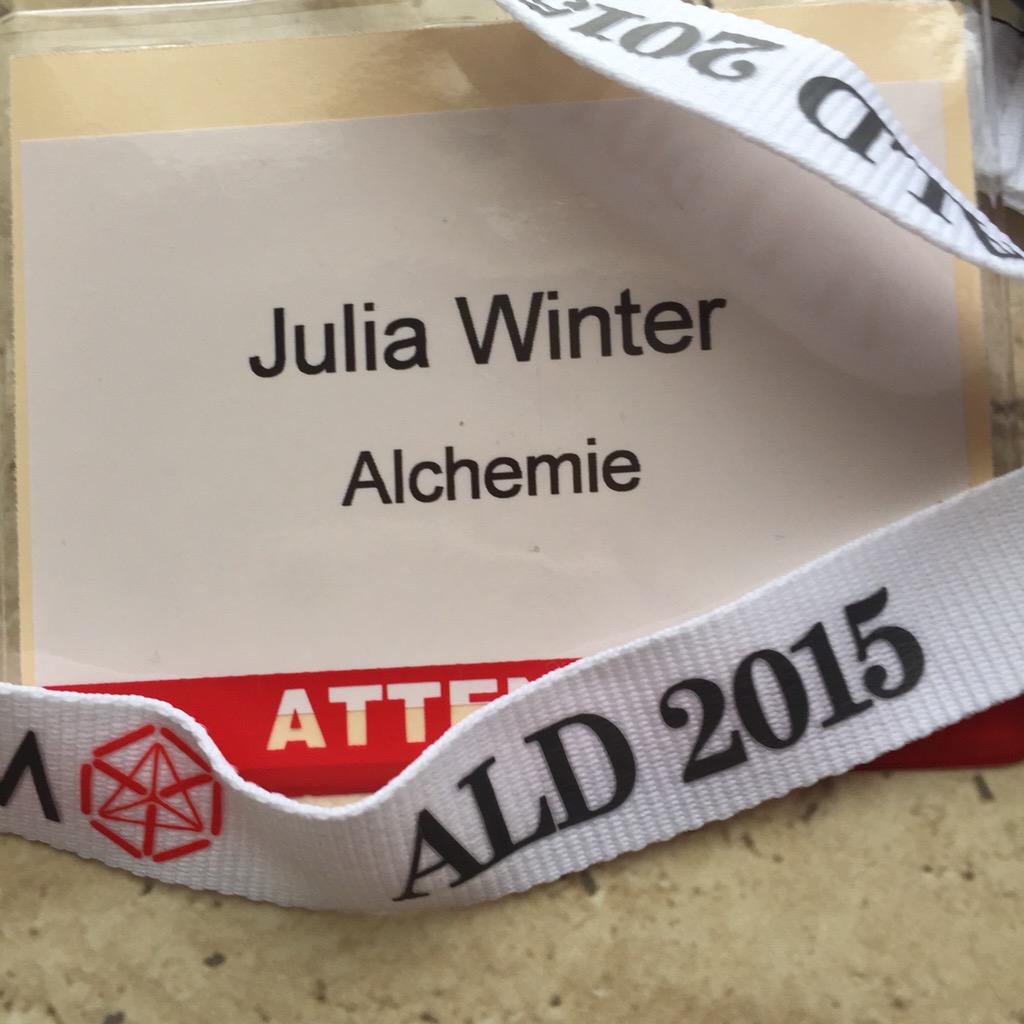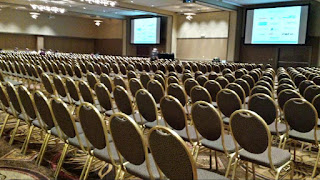Here all pictures that appear on Twitter (#AVSALD2015) or that people send me (jonas.sundqvist@baldengineering.com) will be collected!
Impressions
Technical program and abstracts posted by Angel Yanguas-Gil on twitter
Julia Winter from http://www.alchem.ie gets her badge. Here you can also see that ASM has sponsored the key chain.
Seminars
Sunday Tutorials : Prof. Markku Leskelä, University of Helsinki, Finland, “ALD Process Development: Solutions to Industrial Challenges” Introduced by Prof. Winter. (Photo by Iain Buchanan)
Chuck Winter opens AVS ALD 2015. Over 750 attendees (!) and 400+ abstracts (Sean Barry, Twitter)
Here is a picture showing quite clear how broad ALD has become these days (Picture from Martin Knaut).
Another shot when the before the first pulse of ALD Experts has been injected (Sean Barry, Twitter)
ALD manufacturing session: packed room (Angel Yanguas-Gil, Twitter
Mato Knez giving a plenary on ALD Beyond Electronics (Sean Barry)
The Golden Boy getting ready for his and Canadas great Golden Day - Session B, 9:15: the first ever robust ALD Au metal process. (Sean Barry, Twitter))
Very good talk by Conley on MIIM diodes (Angel Yanguas-Gil, Twitter)
Poster sessions
Our poster on the evolution of ALD is now up! (Angel Yanguas-Gil, Twitter )
ALD Trade show
The leading supplier of high quality Atomic Layer Deposition (ALD) technology for industrial manufacturing (Picture by Timo Malinen)
Pall Corporation showing their latest filter technology : Learn about precursor #filtration for contamination control in adv. #ALD processes (Twitter)
EpiValence Booth http://www.epivalence.com (Picture form LinkedIn, Simon Rushworth)
Dinners and Receptions
Applied Materials, Picosun, Air Products and NSI sponsored party (Sean Barry, Twitter).
Applied Materials, Picosun, Air Products and NSI sponsored party (Martin Knaut, http://www.katharinaknaut.com)
Iain Buchanan from Air Products selling tones of high-k precursor (Martin Knaut, http://www.katharinaknaut.com)
Barking at the Moon (Martin Knaut, http://www.katharinaknaut.com)
Portland Sightseeing
Saturday by Sean Barry (from twitter)
The Golden Team from Ottawa Canada has arrived in Portland : These #BarryLab adventurers drove in a (crappy) van from @ottawacity to #AVSALD2015 in Portland. Check out the bumper
Air Products flying in to Portland passing Mount Hood (Iain Buchanan)
Mount Hood (Martin Knaut, http://www.katharinaknaut.com)
View from the hotel (Tero Pilvi)
Same as above later in the evening at one of the Parties. (Julia Winter, Twitter)
Portland view - Moon and Mountain (Tero Pilvi, Instagram)
The Moon rolling in heading for Mount Hood (Martin Knaut, http://www.katharinaknaut.com)
Old Town Chinatown is the official Chinatown of the Northwest section of Portland. The White Stag sign, a former advertising sign, greets those traveling into Old Town on the Burnside Bridge (Photo by Marcel Junige).
Portland sunset (Photo by Marcel Junige).
Portland airport with Mount Hood in the background (Photo by Marcel Junige).



%20(1).png)




























